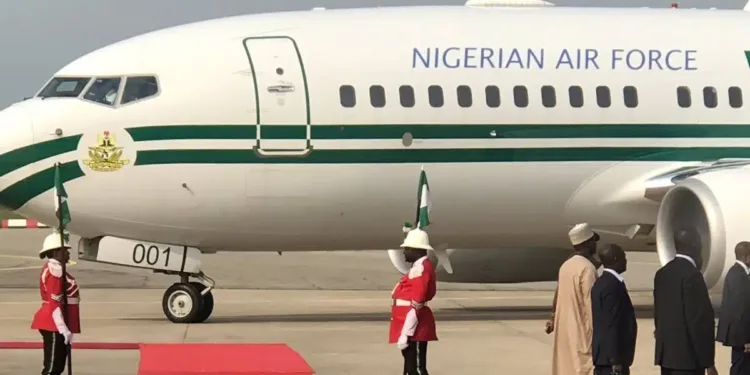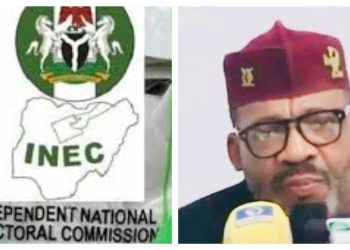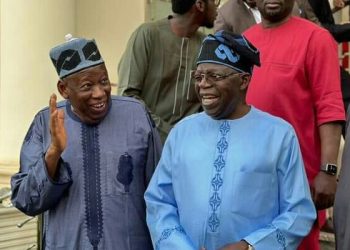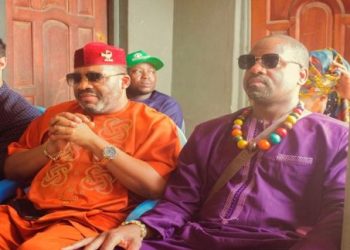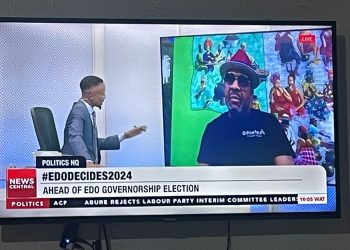Nigeria’s current Presidential administration is set to sell off three jets from the Presidential Air Fleet (PAF) to keep one of its promises of cutting excessive administrative costs.
Nigeria’s government presently has ten aircraft, which comprises six jets and four helicopters in the Presidential fleet. Once three are sold upon approval, the fleet will reduce to seven.
Amid the inflation crisis, the current President of Nigeria, Tinubu promised to reduce the cost of governance, and the corruption scandal that followed his predecessor earlier in the year.
However, critics questioned the lavish lifestyles of the Senators and political appointees, and the number of troops that made the Qatar visit with the President.
FinTech Telex recalls President Tinubu recently endorsed a 60% reduction in official travel entourages as part of cost-cutting measures. His administration seems to be committed to this course as they propose to sell three jets from the Presidential Air Fleet.
Also Read: Tinubu Visits Qatar with 38 Aides Amid Cost-Cutting Talks
However, this administration is not the first one to propose selling some jets off the Presidential Air Fleet. During President Muhammadu Buhari‘s administration, past efforts to sell two aircraft from the fleet have proven abortive.
One of the aircraft in question was a Dassault Falcon 7x executive jet, while the other was a Beechcraft Hawker 4000 business jet. At the initial stage in 2016, potential buyers expressed interest with an offer of $24 million for both aircraft.
However, negotiations hit a roadblock when the bid was significantly reduced to $11 million, prompting the government to reject the offer.
The decision to reject the reduced bid was possibly influenced by several factors, including the perceived undervaluation of the aircraft, concerns about market conditions, and the need to ensure optimal returns for the government’s assets.
Additionally, the complexities of the aviation market, maintenance costs, and depreciation of aircraft values over time may have played a role in the government’s stance.
The inability to sell the aircraft in 2016 highlighted the challenges involved in selling high-value assets such as executive jets and business aircraft.
It also showcases the importance of conducting thorough assessments, engaging with qualified buyers, and navigating market dynamics effectively to achieve favourable outcomes in such transactions.
The yet-to-be-approved decision to sell these jets may also face challenges of sale upon approval by President Tinubu.
For a partial return on investment for these jets, another innovative approach was proposed by Nigeria’s Presidency.
To generate revenue and alleviate maintenance costs for the fleet, some aircraft were considered for charter services to interested state governors, although the specifics of this arrangement remain unclear to the public.
Other aircraft in the Presidential Air Fleet are Boeing Business Jets (BBJ) 737, Gulfstream G550, Gulfstream G500, two Falcon 7X, HS 4000, two Agusta 139, and two Agusta 101.
The BBJ 737 specifically serves as the Nigerian Air Force One, exclusively catering to the President’s travel needs.
One of the helicopters is also used by the President for shuttles during his trips around the country while the other jets in the fleet are used by top government officials and appointees.
This list comprises the Vice President, Kashim Shettima, state governors, the President of the Senate, the Speaker of the House of Representatives, the National Assembly members on special shuttles, the Secretary to the Government of the Federation, ministers on special missions, the Chief of Staff, advisers and even ambassadors of plenipotentiary status.
The BBJ, which was bought for about $43 million during the administration of former President, Olusegun Obasanjo could not be ascertained to be part of the list of aircraft to be sold.
Another reason for this decision was the huge maintenance costs for the Presidential Air Fleet, which have shown a consistent upward trend over the years, reaching an estimated budget of over sixty-one million dollars ($61,353,776), which is equivalent to eighty billion Nigerian Naira (N80 billion) allocated across different fiscal years.
The escalating expenditures raised concerns within the administration, leading current Nigeria’s President to issue a directive aimed at reducing the fleet’s size as a cost-cutting effort.
This directive specifically targets aircraft that incur significant maintenance expenses, aligning with efforts to streamline operational costs and improve fiscal efficiency within the Presidential Air Fleet.


